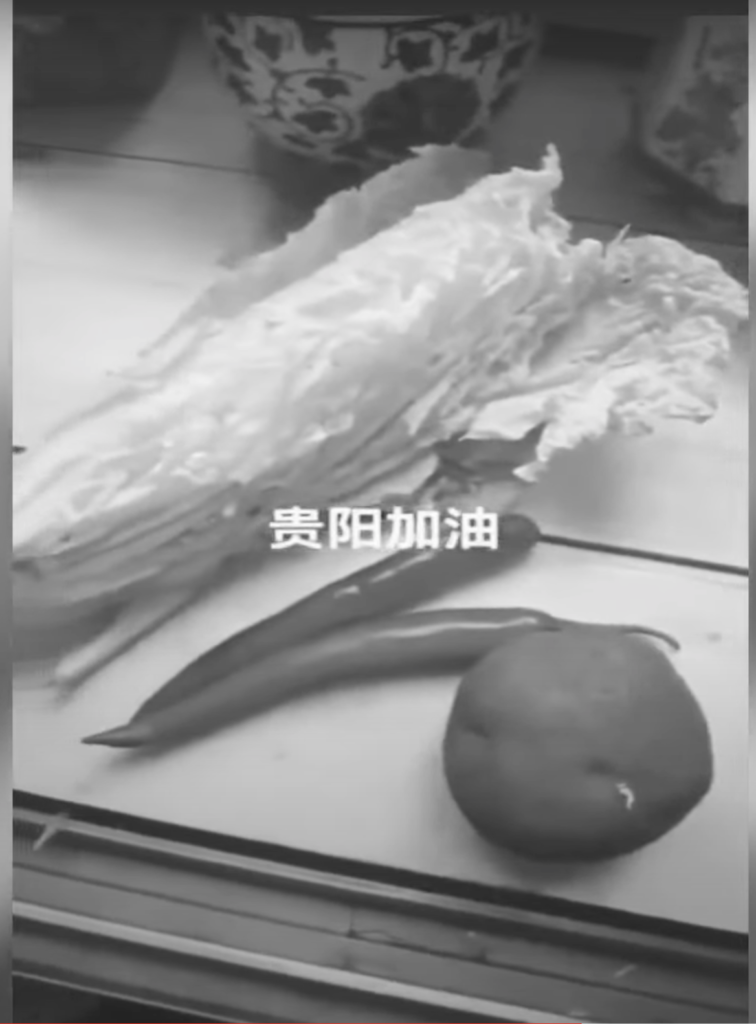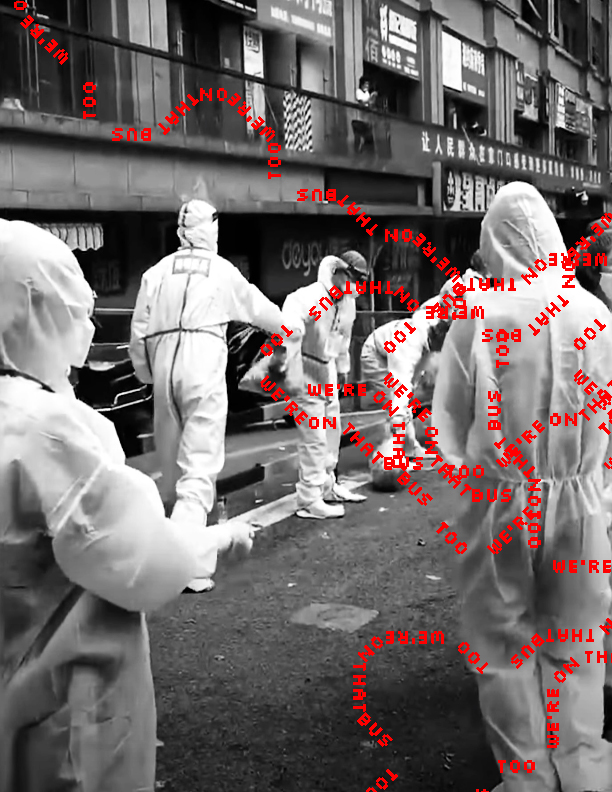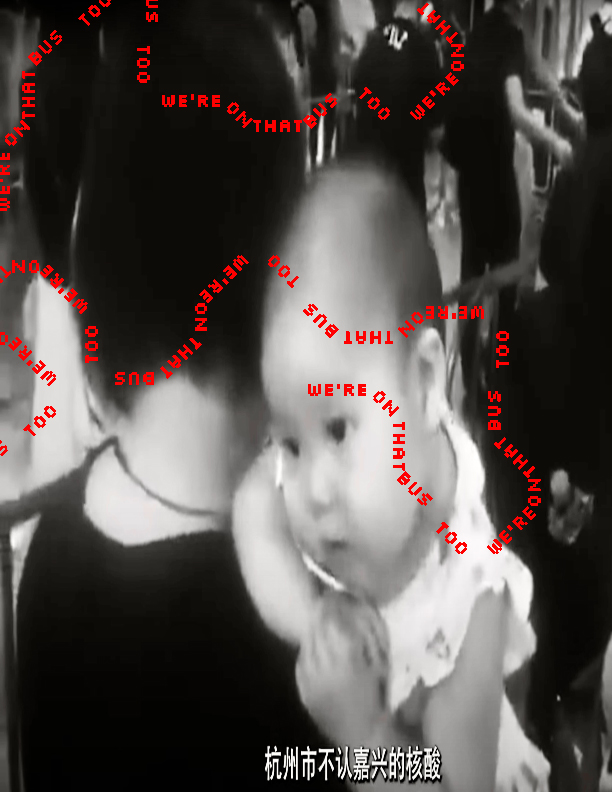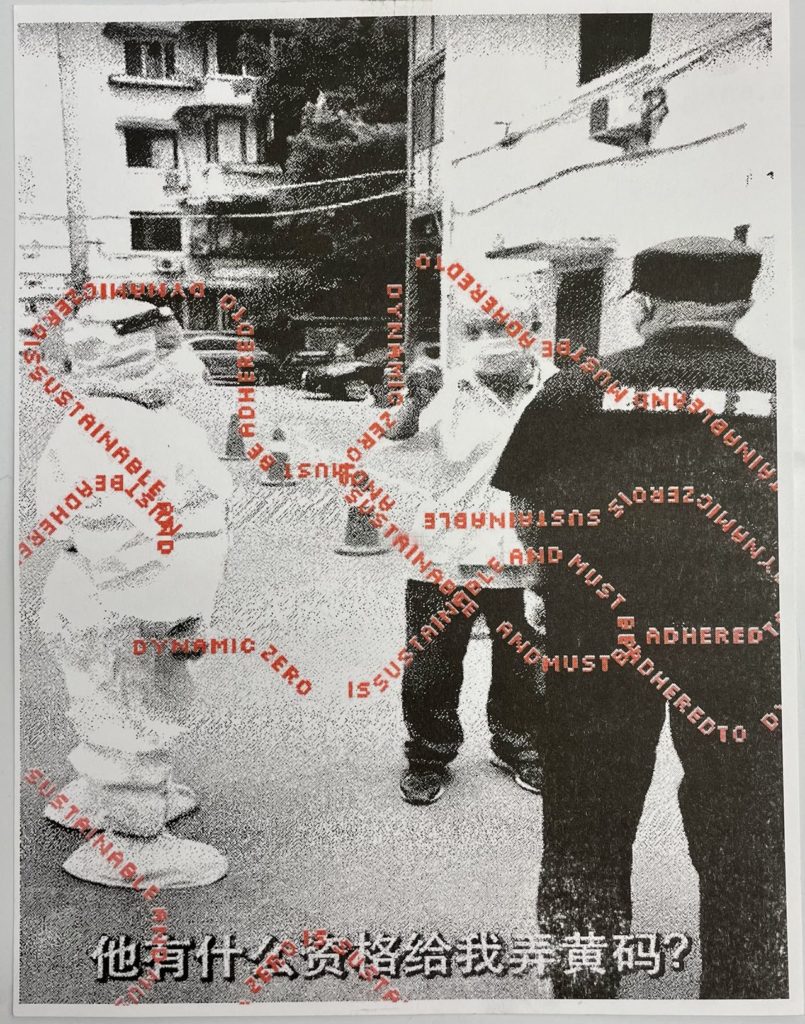[[[for anyone who sees this, if you share this with other people please don’t attach my name. as this is a sensitive topic I’d like to keep it just within our class for now. – shengli]]]]
Background
This set of posters was inspired by the voices of those caught in the absurdity and harshness of Beijing’s Zero-Covid policy. For context, mainland China has been implementing Zero-Covid since the beginning of the pandemic, which aims to control and suppress outbreaks through strategies such as contact tracing, mass testing, border quarantines, and lockdowns. In April 2022, Shanghai went under a city-wide lockdown, and people were confined to their homes with little time to prepare. The lockdowns were very chaotic as people navigated food shortages and had trouble accessing people medical care for non-covid related issues. The lockdown in Shanghai lifted at the end of June this year, and people ultimately emerged with frustration, grief, and psychological distress.
In the months following, outbreaks and lockdowns similar to what happened in Shanghai have been popping up throughout the rest of China. September was a particularly notable month for many, as digital protests resurfaced on Chinese social media, triggered by a bus accident where a bus that was transporting residents in Guiyang (southwestern China) to a quarantine facility crashed in the middle of the night and killed 27 people.
[A note on activism in China] Because of the way things work in China, in-person protests aren’t really a thing there. There are exceptions, such as this series of banners, which were put up one night during Shanghai’s lockdown and then gone the next morning.

Usually, protests take place in digital spaces, where users repost critical posts as fast as they can before they get censored. A viral video called “The Voice of April”, which compiled heartbreaking audio clips from Shanghai’s lockdown, was shared millions of times, and even distorted and manipulated to avoid censorship, only to ultimately be erased from Chinese social media platforms completely.


Design Process
My initial idea was inspired by the momentum of the bus crash that happened in September. I wanted to create 27 ‘generative portraits’ using simple shapes in p5.js, to remember the 27 people who died while on that bus.




I omitted the generative portrait idea, as the feedback I got from class was that the characters looked cute, and the tone I wanted for this series is more serious. I then decided to focus on generative text instead. The slogan I experimented with at first was “We’re on that bus, too,” a trending phrase expressing how people under zero-covid feel like they themselves can be taken away to a quarantine facility at any time. In my first attempt, I manipulated the position of the text with mouseX, mouseY and lowered the opacity to create the trailing effect.



Upon thinking further, I wanted to think more about how to convey the absurdity and tension around this topic. After further brainstorming I changed the background images and the way the text was generated on the screen.

I ended up replacing the images of the bus crash with screenshots from China Digital Times’ “Voices of September” video, a compilation of viral social media videos from lockdowns throughout China this month before they got taken down from the internet.









To generate the text, I edited code from the Generative Design book, which makes the words rotate randomly depending on the punctuation of the sentence. The reasoning for this was both for aesthetic purposes and to create a more visibly generative look.






On the day of printing (10/11/2022), the Chinese Party newspaper People’s Daily released an article titled “Dynamic Zero is Sustainable and Must be Adhered To.” The article states that even though there are challenges with the policy, that China must stick to it. Any public official statement on China’s covid policy usually gets a lot of attention. However, due to the digital censorship, thousands of comments are not visible.

I decided to replace the original “we’re on that bus, too” statement in the code to the title of this recent press statement.









Printing Process
To prepare the posters for print, I separated the layers of generative text from the background using the p5.riso cutout function.












I started with the red text, which I ran through the printer a couple of times to have a more saturated color.

I then proceeded to add the background images, which I also dithered using the p5.riso examples. Most of the pieces printed successfully, with a few where I had to adjust the opacity to prevent the printer from jamming. The final result is this:






For some of the prints, the registration came out saturated and crisp, and was pretty successful.

For one of the sketches in particular, the one of the man on his knees (he was begging for medical care for his swollen legs), perhaps because the print had more patches of pure color, there were some misregistrations.

Ultimately this assignment challenged my design process and time management, and it was rather cathartic to be able to make a piece on a topic that has impacted me and so many people I care about. [Again, for anyone who sees this, if you do share this with other people please don’t attach my name. As this is a sensitive topic I’d like to keep it just within our class for now.]